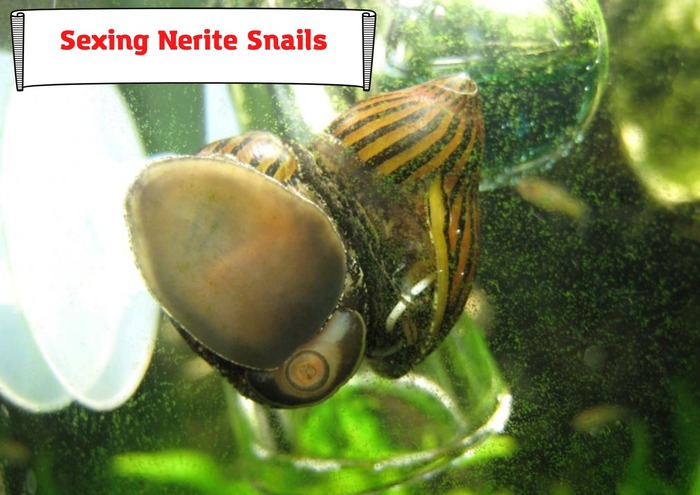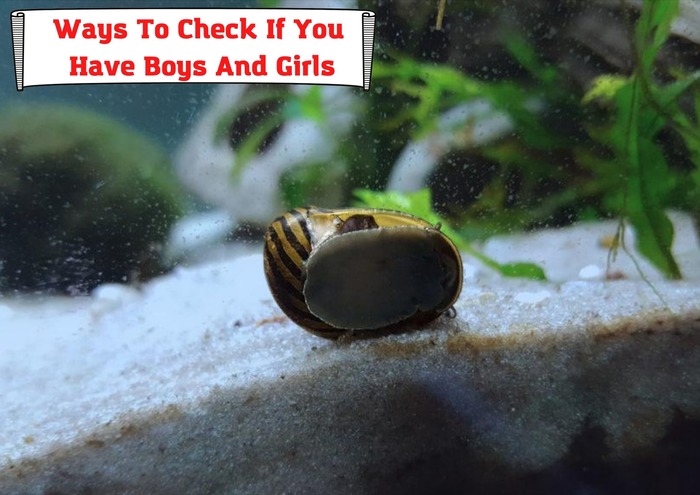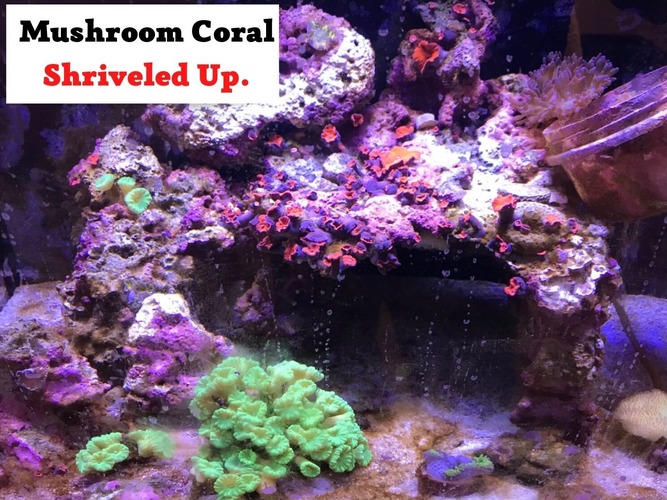
Nerite snails are notorious for their algae cleaning abilities in a tank. They are also a better means of controlling pollution in the tank than chemical options. But sexing nerite snails is not as straightforward as other species of marine life.
Here is a full discourse on sexing nerite snails and ways to check their sexes.
This article will give you a thorough understanding of how sexing nerite snails work, ways to check if you have male or female nerite snails, and a few other important notices about nerite snails that you should know as a hobbyist.
Nerite Snails
Nerite snails are a biological tank cleanser. They are of many species scattered in tropical waters around the world. The freshwater nerite snails usually come from brackish water in Africa, while the saltwater species usually come from the Pacific or Caribbean Coast. For instance, the species with the name natalensis come from South Africa. They are native to the coastal plains of Somalia, Tanzania, and even South Africa. The bulk of many other species sold in pet stores in the US is usually from Asia.
Nerite snails are small sea snails from the Neritidae family. They have gills for respiration underwater and an operculum. They are said to be gregarious. This means they are social animals who like the company of each other. They are preferred in the hobby because they are great algae eaters. They scrape the algae in the path for food keeping your tank clean.
Some popular nerite snails in the hobby include the Zebra nerite snails (Neritina natalensis), the Tiger nerite snails (Neritina turrita), the Olive nerite snails (Neritina reclivata), and many others. They can be bought at the local pet stores, but some species may cost more because they are harder to keep.
All species usually have a hard shell that coils. This shell covers the body but settles on the foot of the snail, which is essentially a large muscular body part for movement. They also have tentacles. The difference in species is mostly in shape, structure, distinctive marks, and colors.
Sexing Nerite Snails
Sexing nerite snails is still not as clear as mating many other species of marine life. However, a few things are clear. Nerite snails are not hermaphrodites like many other snail species. This means they do not have both male and female reproductive organs. Nerite snails are either male or female. So the males need a female to mate during mating season.
During mating, the male follows the female around the tank. She would normally reject him, but he’ll keep chasing her until she finally accepts him. He stays at her right side and inserts his reproductive organ below her mantle edge. After this, the female uses her muscular foot to haul egg capsules to the surface or any available platform. She fixes them there.
The biologists Cristiane Barroso and Helena Matthews-Cascon, in their research of the spawning and development of Neritina natalensis, give a more detailed explanation of the development of the zebra nerite snail under laboratory conditions.
They observed that after mating, the females fix the egg capsules on any vacant substratum. They may deposit it on driftwood or even leaves. The egg capsules are usually yellowish when transferred, but they darken with progress. Each capsule contains about 32-106 eggs.
This reproductive strategy is known as intracapsular metamorphosis. It is particular to freshwater nerite snail species. The eggs hatch and the snails emerge as “miniature” adults.
Other species may hatch as planktotrophic veligers larvae. The estuarine species exhibit this reproductive strategy. These are species such as the neritina latissima, neritina canalis, and neritina afra. They stay in partially contained shoreside bodies of brackish water with one or more freshwater sources flowing into it and with an unrestricted connection to the sea.
Ways To Check If You Have Boys And Girls

There are many reasons you could be interested in identifying the sex of your nerite snails. You may want to ensure that you keep nerite snails that do not lay eggs because even though the eggs would not hatch, the females will leave these eggs all over plants in the tanks. It can be frustrating because these eggs are hard to remove from plants. You may also search for a female nerite snail because you want to breed them.
As earlier mentioned, it helps to know that nerite snails are not hermaphrodites. They have specific sexes. They are either male or female. But identifying them is not as easy as it seems.
The male nerite snails usually have a tiny little skin fold around the male’s right antenna. However, it isn’t easy to spot this distinguishing trait with your naked eyes. It gets more challenging because they are usually actively mopping up and consuming algae all over the tank.
But here’s a useful hack that could help. Although it is time-consuming, it would help. You could get the snails and put them in separate tanks. It may take a few weeks or months. Male nerite snails do not lay egg capsules. But the females will fix their egg capsules on any vacant surface they like. Once you notice those egg capsules looking like sesame seeds spread on a leaf or driftwood, that means the nerite snail in that tank is a female.
You can go on to trade that female for another one at a local store. There is a 50-50 chance that you will get a male. But it would be best to try this hack again until you are sure that all your nerite snails are males.
Although this hack may be time-consuming, it is better because you got the nerite snails to clean the tank of algae in the first place. So keeping females that, although clean the tank but pollute it with egg capsules that would not hatch, defeats the purpose of getting them in the first place.
Note:
Many guides and sites argue that female nerite snails lay eggs. Technically speaking, they do not lay eggs. That is inaccurate. Those white sesame seed-looking bumps are not eggs but egg capsules. It is these capsules that contain the eggs to be hatched. They can hold anywhere from 30-100 eggs. On average, they hold about 68 eggs. So the eggs are in the capsules, not that the eggs are capsules.
Also, if you’d like to get rid of the egg capsules, it would be best to use an aquarium-safe tool such as a razor blade. Carefully scrape the eggs off the driftwood. You can stop the deposit of egg capsules by getting rid of the female snails.
It would not be wise to use chemicals like copper sulfate to eliminate the egg capsules. Chemicals like these will harm other marine lives in the tank as they are toxic to marine life.
Bottom Line
Nerite snails are still the subject of much research. Although they are great algae cleaners, they can also cause pollution in your tank. This is why many hobbyists are interested in identifying the males from the females to limit the rate of pollution in their tanks. The quick hack is one foolproof way to tell the males from the females.
Although it is time-consuming, it is worth it in the end because it will ultimately limit the pollution in your tank.
- Snail Mantle Collapse – Here’s What Every Pet Owner Should Know - April 2, 2023
- Algaefix Killed My Fish – What Have I Done Wrong? - March 2, 2023
- How Long Can Live Rock Be Out of Water? And What Will Happen Then? - February 2, 2023




